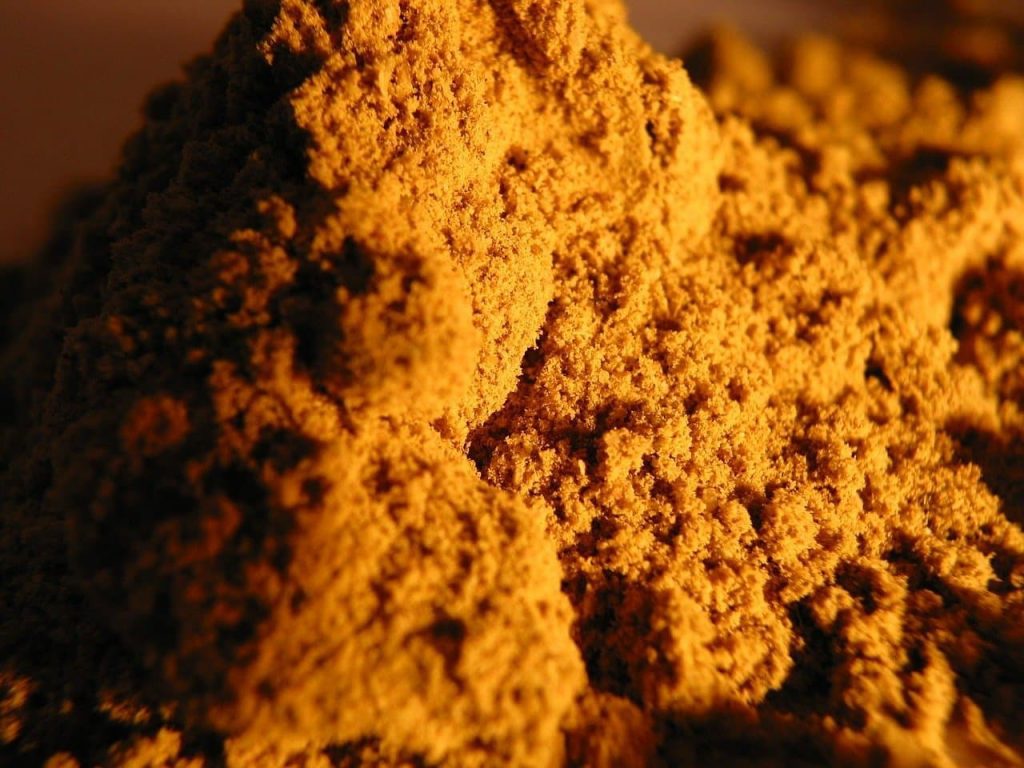For the avoidance of doubt, curry powder should not be confused with curry, which is not the common spice in India, but the method of preparation with sauce.
In European cuisine, the curry is from 17 to 18. century. But already in the 12th century, during the reign of Richard I, the use of ginger, cinnamon, nutmeg, cloves, coriander, cardamom, and anise was typical of English cuisine. And these spices have often been used to make strong dishes with strong spices, similar to Indian cuisine.
Then, from the middle of the 17th century, after the British colonized Calcutta and then Bombay, the use of exotic Indian flavors appeared more exponentially in English cuisine. Around 1780, the curry was already an accepted item on London menus. And at about the same time, the spice blend was released commercially in England.
Curry has become so home to English cuisine that it is included in Queen Victoria’s cookbook, which discusses modern cuisine. Moreover, in her own cookbook, published in 1861, Mrs. Beeton already publishes 14 kinds of curry recipes.
The English feel so much in their own world that they can boast their own curry composition. Chicken tikka masala is an English curry to the core. The originally existing chicken teak made in a tandoor (Indian oven) is served in a small tomato, spicy sauce, making an original Indian dish such a home-made dish so close to the hearts of the English.
In addition to India, even in Myanmar, Sri Lanka, Thailand, Laos, Cambodia, Malaysia, and Indonesia, curry spices and mixtures made from them are part of traditional cuisine.
The composition of the curry powder varies not only from country to country, but even from village to village, the proven recipe is different. In addition to family traditions, the composition is greatly influenced by the nature of the ingredients and the way they are prepared.
Without claiming completeness, these spices may be included in the curry mix:
coriander seeds, cumin seeds, fenugreek seeds, turmeric, cloves, garlic, curry leaves, fennel, ginger, chili, mustard seeds, paprika, salt, cinnamon, black pepper, poppy seeds, anise, chickpeas, cardamom, celery seeds, dill seeds, nutmeg, nutmeg
Spicy curry powder: coriander seeds, chili (up to several types), mustard seeds, ginger, cumin, fenugreek
Vindaloo: garlic, cardamom seeds, cinnamon, pepper, coriander, chili, mustard seeds, turmeric, ginger, bay leaf.
The curry leaf, which gives the curry powder its name, is a green leaf with a relatively mild taste, which is not the most important element of the mixture in terms of taste or color.
The spice mixes can also be made at home. In this case, it is best to prepare the mixture just before use, grind the spices. The remaining spice in a well-sealed box retains its aroma for a few months.
And as we have learned, turmeric is an indispensable element due to its color. It should be noted that there is also a plant called curry, the bay leaf-like leaves of which are widely used in South Indian and Sri Lankan cuisine, respectively.
When to buy Curry powder?
It can be purchased almost anywhere, anytime.
How to store Curry powder?
It can be stored in its own packaging or in a tightly closed spice rack.
What is curry powder good for?
Of course, in addition to sauces, the spice mixture can be used in a wide variety of ways. We can flavor pasta, soups, fillings, vegetables, color rice, and marinate meat.
The meaty recipes for Currys are neither the end nor the length. It is often made from curry chicken, pork, beef or fish. In Thai cuisine, curry sauces are enriched with coconut milk and are often made with crab.
In basically vegetarian India, these spices are used to flavor mostly one-course meals with vegetables. Very good curry can be made from potatoes, cauliflower, chickpeas or lentils.
The ingredients in the curry – cumin, turmeric and paprika – contain salicylic acid, which is why a plate of curry is good for headaches.
Last updated: September 24, 2023


